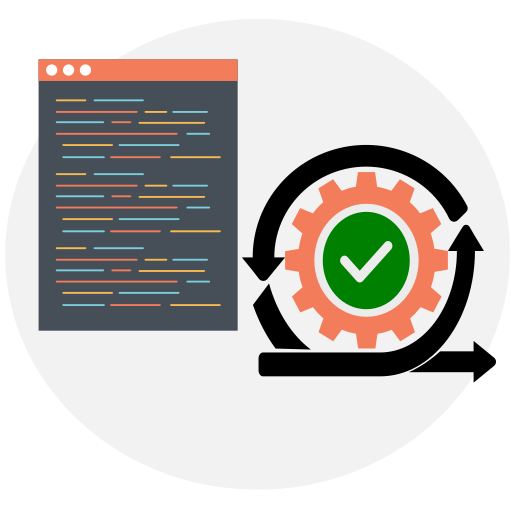Agile software development is a methodology that has been gaining popularity in recent years due to its ability to deliver high-quality software products quickly and efficiently. Agile development involves a collaborative approach to software development that emphasizes flexibility, customer satisfaction, and iterative improvement.
This approach to software development can offer a range of benefits to both software development teams and the businesses they serve. In this article, we will explore the key benefits of agile software development and why it has become such a popular methodology among software development teams.
Faster time-to-market: One of the primary benefits of agile software development is that it helps businesses get their products to market faster. It enables teams to deliver working software products faster than traditional software development approaches because agile methods focus on delivering small, incremental changes, which can be tested and validated quickly. This helps to identify problems early in the development cycle, making it easier to make changes and adjustments. Businesses can start generating revenue sooner, and they can also respond more quickly to changes in the market or customer needs.
The iterative approach used in agile development allows teams to break down projects into smaller, more manageable tasks, making it easier to complete each task quickly. This approach enables businesses to respond to changing market conditions more quickly and gain a competitive advantage.
Flexibility: Agile software development allows for greater flexibility in project management. Agile development is designed to be flexible and adaptive. With agile, development teams work in short, iterative cycles, with each cycle building on the previous one. This approach allows for greater adaptability, as teams can respond to changing requirements and priorities quickly and can adjust their plans as needed based on new information, feedback from stakeholders, or changes in the market. An Agile project can evolve over time, rather than being set in stone from the outset.
Agile methods allow teams to adjust their development approach based on feedback from stakeholders and customers, making it easier to deliver software that meets the needs of the end-users.
This flexibility makes it easier for teams to deliver high-quality products that meet the needs of customers.
Increased quality: Agile development places a strong emphasis on testing and quality assurance. This helps to ensure that the software being developed is of high quality and meets the needs of the end-users. By testing and validating software early in the development cycle, teams can identify problems and fix them before they become more difficult and expensive to address.
Agile software development also emphasizes collaboration and communication between team members. By working closely together, teams can identify and address issues in the development process quickly. This approach results in higher quality products that meet the needs of customers.
Agile development provides a framework for continuous testing and feedback, ensuring that issues are identified and resolved quickly, resulting in higher quality products.
Reduced risk: Agile development reduces risk by delivering working software early in the development cycle. This allows teams to identify potential problems and address them before they become major issues. By delivering working software in short iterations, teams can reduce the risk of building software that does not meet the needs of the end-users.
Improved transparency: Agile development provides greater transparency into the development process by making the development cycle visible to all stakeholders. This helps to build trust and accountability between team members, stakeholders, and customers. Transparency also makes it easier to identify potential problems early in the development cycle, making it easier to address them before they become major issues.
Increased Customer Satisfaction: Because agile software development emphasizes collaboration and communication with stakeholders, it can also lead to increased customer satisfaction. By involving customers in the development process, development teams can gain a better understanding of their needs and preferences, and they can adjust the product accordingly. This means that the final product is more likely to meet the needs of its intended users, leading to greater customer satisfaction and loyalty.
This customer-centric approach has become increasingly important in today’s market, where customer loyalty and satisfaction are critical to business success.
Cost Savings: Agile software development can result in significant cost savings for businesses. The iterative approach used in agile development enables teams to identify and address issues early in the development process, reducing the risk of costly rework later. Additionally, the flexible nature of agile development allows businesses to respond to changing requirements quickly, reducing the likelihood of wasted resources.
Increased collaboration: Another key benefit of agile software development is that it encourages collaboration between team members, stakeholders, and customers. By involving stakeholders and customers in the development process, teams can ensure that the software they are building meets the needs of the end-users. This collaboration also helps to ensure that everyone is on the same page and that there are no surprises at the end of the development cycle.
With agile, teams work in small, cross-functional groups, with each member contributing their unique skills and perspectives to the project. This approach fosters better teamwork, as well as more effective problem-solving and decision-making. By working together closely and communicating frequently, team members can also identify and resolve issues more quickly and effectively, reducing the risk of project delays or failures.
Continuous Improvement: Finally, agile software development encourages continuous improvement and learning. By working in short cycles and gathering feedback from stakeholders, development teams can identify areas for improvement and make changes to the product accordingly. This means that the product can evolve over time, becoming more effective and efficient with each iteration. By continuously learning and adapting, development teams can also improve their own skills and processes, leading to greater success in future projects.
The benefits of agile software development are numerous, making it a popular methodology among software development teams. Agile methods reduce risk and increase transparency, making it easier for all stakeholders to participate in the development process.
Agile development enables teams to be more flexible, deliver products faster, and produce higher quality products that meet the needs of customers.
By adopting agile software development, businesses can gain a competitive advantage in today’s rapidly changing market.
Contact us today to learn more about how we can help you benefit from Agile software development for your business.
Related: How Behavior-Driven Development (BDD) Delivers Better Software



